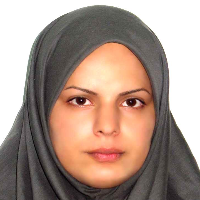Evaluation of distribution pattern of medicinal plant Scophularia striata Boiss and species diversity in different altitudes Siahkouh region of Dehloran
Scophularia striata Boiss plant from Scrophulariaceae family. In western states of Iran, a plant of Snapdragon has traditional medical usage. It utilize as a disinfectant and for treatment of stomach ulcer, infection of eyes and ears in the western regions of the country. Different parts of the Scophularia striata have different medicinal properties. So that the leaf extract of the plant has an inhibitory effect on the growth of fibroblasts and its seed extract stimulates the growth of the cell.
Spatial distribution and species diversity of Scophularia striata was evaluated in Siahkouh region of Dehloran in 2020 with the aim of determining the appropriate distribution pattern of sampling and selection of the environmental factors affecting the species diversity of medicinal plants. Random sampling carried out according to w pattern in three altitudes (205-605, 605-1005 and 1005-1405 m) and two directs: West and East. Spatial distribution was evaluated by distribution indices, Taylor and Iwao models and diversity indicators.
Different parts of Siahkuh Dehloran region have different distribution and diversity and with increasing the distribution height, the Scophularia striata becomes random and the diversity of species was uniform. All comparative methods showed that the distribution in the elevation class 1405-1005 was not significant. Shannon-Wiener and Simpson species diversity index also showed significant differences in three altitudes and two East and West directions of Siahkuh region. The results showed the highest value of Taylor and Iwao coefficient in west direction of altitude 605-1005 were 1.05 and 1.06 for Taylor and 1.18 and 1.17 for Iwao respectively, which Iwao model fitted better than Taylor model according to R2 and P obtained from 605-1005 altitude. Other indices values indicated the most amount of coefficient was in 205-605 m altitude and west direction. There are significant differences between the values of diversity indices in 3 altitudes and 2 directions of West and East (P≤0.05), too. The most and lowest amounts of Shannon-Weiner index were 0.76 and 1.23 for 205-605 and 1005-1405 m altitudes, respectively. Also, among the various indices, Morisita was better than others to show the distribution pattern of the Scophularia striata.
The results showed that spatial distribution of the medicinal plant S. striata was cumulative in different indices and distribution pattern was randomly, species diversity decreased and uniformity amount enhanced by addition of altitudes. By comparing the diversity of species and distribution of Scophularia striata in other regions of the country and comparing with the results of this research, the best conditions can evaluate for physiological growth of the plant in terms of temperature, altitude, amount of sunlight, soil conditions etc. The results of the present study can also be used in studies related to modeling the sampling of medicinal plants and suggesting suitable breeding species to restore the vegetation of degraded species. Evaluation the distribution pattern in different plants can help to preserve rare species of medicinal and ornamental plants. Especially in the case of endangered plants, whether by humans or by livestock or natural disasters, the largest number of plant species can be found with similar research, in an area with a specific distribution pattern to achieve its full purpose with cost reduction used to maintain that species. In addition, determining the distribution pattern with the study of species diversity in different regions can help the researcher to determine what environmental or soil conditions in that region have caused the growth of these particular species, and the relationship between these plants. It is even possible to try in breeding programs for cossing between similar species and genera with close relationship to increase species diversity in that area and reduce the risk of extinction in the coming years.
Iwao , Plot , Taylor , Transect , Shannon-Weiner
-
Synthesis of Zinc Nanoparticles in <i>Hibiscus sabdariffa</i> Plant Extract and Investigation of Its Antimicrobial Properties
Mahin Rigi*,
Gene, Cell and Tissue, Jul 2024 -
Evaluation of morphological traits of leaf and fruit in Ziziphus mauritiana L. genotypes in southern Iran
Naser Mirzaei, Leila Fahmide, Bahman Fazeli-Nasab *
Journal of Crop Science Research in Arid Regions, -
Effects of Coumarin on Amylase Activity, Electrolyte Leakage and Growth of Wheat (Triticum aestivum L.), Barley (Hordeum vulgare L.) and Sesame (Sesamum indicium L.)
Masoud Haidarizadeh *, Vahed Lotfi, Bahman Fazeli-Nasab
Agrotechniques in Industrial Crops, Spring 2024 -
Investigation of co-expression network of eptA colistin resistance gene in Escherichia coli
Yasoub Shiri *, Samira Saadatjou,
journal of new findings in veterinary microbiology,



